As a result of the Russian-Ukrainian War, millions of Ukrainians have left their country and Europe has seen the largest wave of forced migration since World War II. This has once again raised questions about the fairness of migration policies of European and global institutions. Many symptoms indicate critical problems in the architecture of the international asylum system: the contrast between the reception of Ukrainian refugees and those fleeing war from other countries; the weakness and confused actions of humanitarian organizations under the auspices of the UN; the lack of consistent government programs in the EU countries that would provide not only temporary asylum but also transition to permanent residence. Due to the passive and weak response of official institutions in many European countries, the main burden of supporting refugees fell on civil society, which sometimes acted better and faster than the (inter)governmental bodies that were created ostensibly to address such situations.
What is the reason for the different attitudes of European countries towards Ukrainian refugees and refugees from the Middle East? Why has civil society helped displaced persons more than some states and UN agencies? How is the Ukrainian experience similar and different from the experience of forced displacement from Syria, South Sudan, or Venezuela?
These and other questions were addressed by the participants of the discussion at the Feuerbach 11 conference, which was held in 2023 under the general theme “Dialogues of the Peripheries.” The discussion was attended by: Ruslana Kozienko, social anthropologist at the Central European University; Ayse Caglar, social and cultural anthropologist at the University of Vienna; Elizabeth Cullen Dunn, geographer at Indiana University Bloomington; and Volha Biziukova, political and social anthropologist at Brown University.
The discussion was moderated by Anastasia Ryabchuk, sociologist and editor of the Commons journal.
Reception and Accommodation of Refugees in Austria: Temporary, Not Permanent
When large numbers of refugees from Ukraine began crossing the border, the EU activated the Temporary Protection Directive, adopted in 2001 in response to the wave of immigration from the former Yugoslavia. The Directive establishes guarantees and rights for persons with temporary protection, but does not have clear implementation mechanisms, which gives a lot of leeway to nation states when it comes to possible measures. For example, in Austria, Ukrainians are supported by the system of basic care (Grundversorgung) due to their Temporary Protection status. Ruslana Kozienko spoke about this at the panel discussion. Together with her colleague Ayse Caglar, she studied the specifics of the reception and accommodation of Ukrainian refugees in Austria.
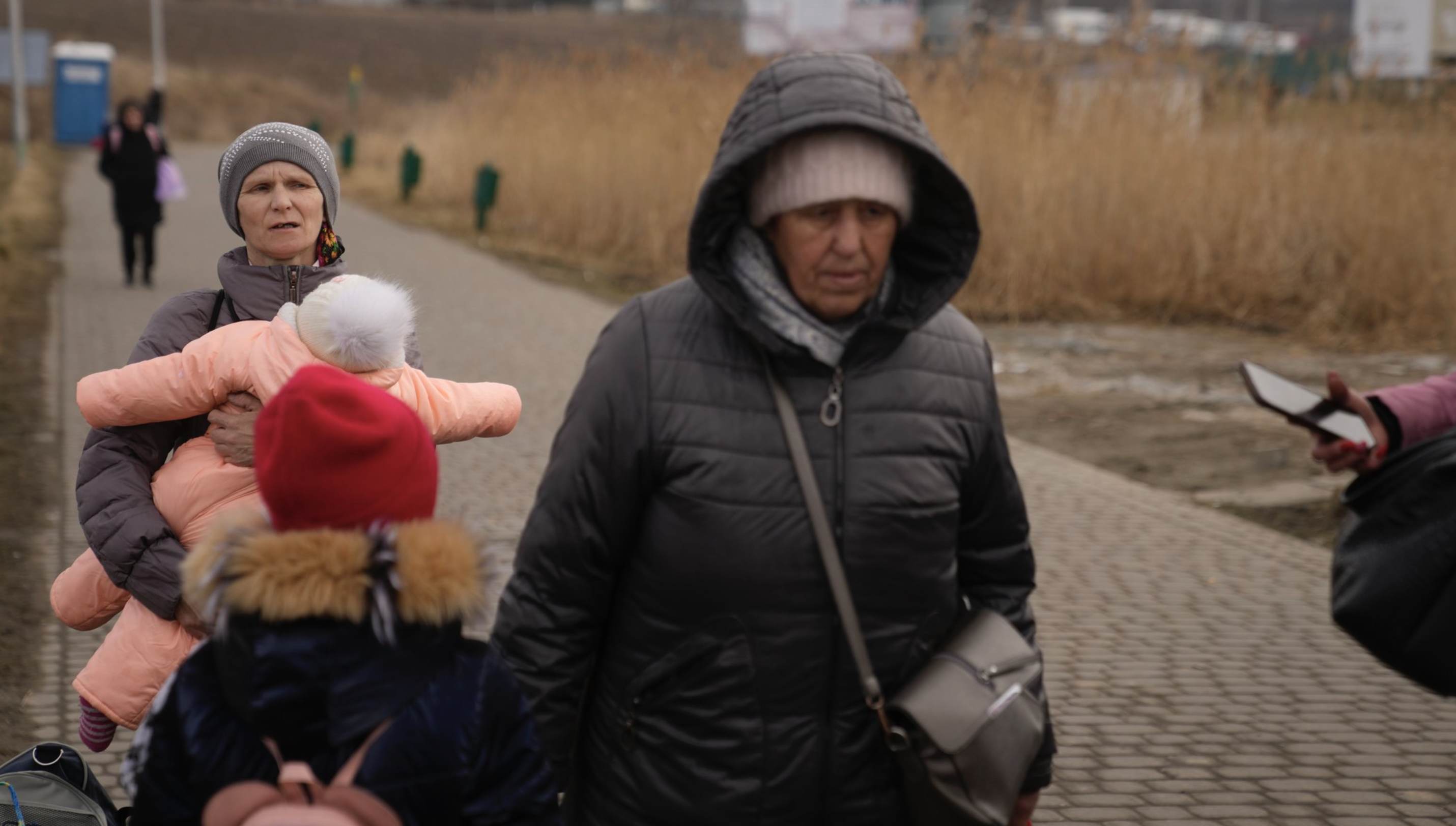 Refugees from Ukraine on the border with Poland. Photo credit: AP
Refugees from Ukraine on the border with Poland. Photo credit: AP
According to Ruslana Kozienko, the system of basic care allows for monthly payments of up to EUR 260 per adult and EUR 330 per family. However, basic care is provided under certain conditions, namely:
1) if the family lives in a collective center and receives free meals, the cash payment is reduced to 40 euros per month;
2) assistance is provided only if a person’s monthly income is less than 110 euros.
Ruslana Kozienko points out that the latter condition actually contradicts the Directive, as financial assistance depends on a person’s income. Another problem with basic care is that the infrastructure for its provision is tied to the network of collective centers. Since 2015, the Austrian migration system has been focused on migration from Southern Europe: refugees were met at the border by border guards and taken to centers, distributed among different Austrian federal states. The route of Ukrainian displaced persons was quite different: they were coming from the East and the North, often by their own transport, using the free border crossing regime, and then they usually stopped in Vienna, where they rented private accommodation. As a result, many Ukrainians had fewer opportunities to apply for basic care, and the Austrian capital was disproportionately affected by the burden compared to other regions.
Austrian non-governmental organizations (NGOs) played an active and positive role in the reception and accommodation of refugees. According to Ruslana Kozienko, this had to do in part with country specifics: in Austria, local authorities outsource social work to NGOs. However, another reason why the active involvement of civil society in helping refugees has become a global trend, is due to the anti-immigration policy of many governments that are not interested in finding long-term solutions.
In the case of Austria, without a systematic government policy, civil society assistance was not enough. As a result, many displaced persons had to return to Ukraine due to lack of financial resources and employment prospects. Those who stayed in Austria were forced to look for additional sources of income. The rhetoric of a “short war,” wishful thinking, and a short planning horizon with the expectation that the war would end quickly and refugees would return home – all of this also led to the failure of Austrian migration policy. After all, this policy is built on the model of a “transit country”, where Austria is a place for temporary stay, and not the final destination.
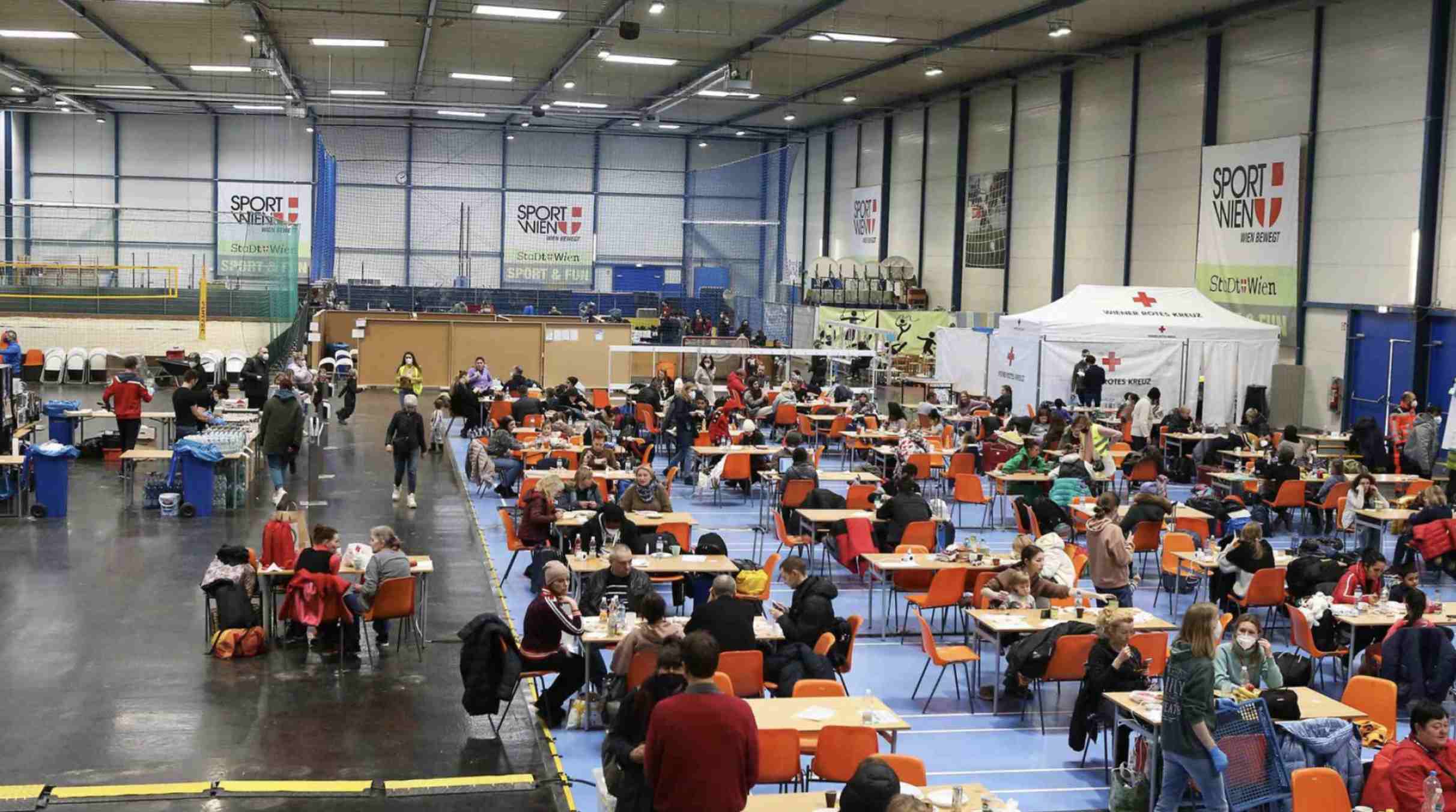 One of the refugee reception centers in Vienna. Photo credit: Train of Hope
One of the refugee reception centers in Vienna. Photo credit: Train of Hope
Among the structural factors that had an impact on the reception and accommodation of Ukrainians, Kozienko mentioned the simplified border crossing regime, as well as special legal regimes introduced by some EU countries to attract cheap labor from Ukraine before the full-scale invasion. The situation was similar for forced migrants from Syria in Turkey, from Venezuela in South and Central America, and from the former Yugoslavia in the EU. This means that the “preferential treatment” of Ukrainians is not a unique phenomenon related to racism. Rather, it is the result of the special relations between countries: extensive cooperation within the framework of regional agreements makes it easier for citizens of countries at war to move to a neighboring country.
The most dangerous trend that the researcher sees is that, due to weak international regulation, forms of temporary protection are becoming increasingly popular tools for states to combat mass migration. Temporary protection is provided instead of the full-fledged asylum guaranteed by the 1951 Convention Relating to the Status of Refugees. It allows for legal residence, access to the labor market, and some social guarantees, including health insurance, but on a short-term basis.
“Unlike international protection, the standards and guarantees of temporary protection are not enshrined at the international level, they are temporary in nature, which makes them more attractive to national governments,” summarized Ruslana Kozienko. “Moreover, the wording of the EU Directive is rather ambivalent, ambiguous, and general, which accounts for varying interpretations by national governments. As a result, the implementation of temporary protection is a political decision at the discretion of the nation state, and therefore the Directive is particularly vulnerable to new interpretations and rapid changes.”
In other words, in the long run, the growing trend of states providing temporary protection instead of permanent support presents a real danger because governments cut back on the necessary permanent asylum programs and no stable system is being developed for receiving and accommodating refugees, even though waves of migration occur periodically.
 Ukrainian refugees arrive in Przemysl, Poland, on February 27, 2022. Photo credit: AP / Petr David Josek
Ukrainian refugees arrive in Przemysl, Poland, on February 27, 2022. Photo credit: AP / Petr David Josek
The Confusion of Statuses, the Narrative of “Crisis” and Solidarity as a Counterpolicy
Ayse Caglar, commenting on the results of the study conducted together with Ruslana Kozienko, gave the following summary:
1) the application of the temporary protection system was due to the simplicity of its implementation;
2) Austria, and this applies to other EU countries as well, does not have programs for the transition from temporary to permanent protection;
3) racial prejudice, on the one hand, and cultural affinity, on the other, also affect the amount of aid. For example, assistance to Syrian refugees in Turkey was positively influenced by the fact that Syrians and Turks belong to the same religious group, while in Europe religious differences have been a source of conflict;
4) for a long time, the word “crisis” was not used to describe migration waves to Europe: even in Turkey, where the number of Syrian refugees is higher than in Europe, no one used this term to describe the situation. The word “crisis” was first used in 2015, in the context of a large migration wave from the Global South to the EU.
According to Ayse Caglar, it is necessary to follow the narrative that the EU has a seemingly common vision of migration policy. In fact, national governments have a wide scope for their own, often biased, measures, which create a situation where different groups of displaced persons find themselves with different statuses and assistance. The artificial categories and statuses by which refugees are divided, including the discourse of “emergency,” abnormality of each migration wave, which must be received and accommodated in a special way, – all these factors contribute to the disintegration of ties between different groups of refugees and reinforce neoliberal hegemony.
 Inscription “Info-Point Ukraine Ankunfszentrum” in German and Ukrainian on the fence in front of a container at Berlin’s main railway station, December 23, 2022. Photo credit: dpa / Monika Skolimowska
Inscription “Info-Point Ukraine Ankunfszentrum” in German and Ukrainian on the fence in front of a container at Berlin’s main railway station, December 23, 2022. Photo credit: dpa / Monika Skolimowska
What can be done to counter such divisive migration policies of European states? According to the researcher, a counterpolicy could be “building solidarity on the basis of differences” between different groups of displaced persons and civil society actors.
“There is some friction, but there is also interaction between different groups,” said Caglar. “Yes, it’s not easy, it’s conflict-prone, but different groups are starting to work together and develop a common project, a common vision. At the same time, they support many different alliances and unions that unite around gender, legal status, ethnicity, anything. This kind of socialization is not aimed at ‘destroying differences’ or ‘tearing apart differences’: it helps different groups build connections with each other in order to act together.”
According to Elizabeth Cullen Dunn, the power of mass solidarity allows groups to create flexible logistics systems, such as for the rapid accumulation and distribution of food. One network of volunteers she studied was able to transport about $1 million worth of goods across the border in a week. However, it’s not just about solidarity: the flexible mobility of volunteers, their ability to quickly find, collect and send the right goods, is also linked to widespread access to the Internet and to manufactured goods. That is why it is much easier to organize aid deliveries in Europe than, say, in South Sudan, where no such infrastructure has been developed.
In other words, the spontaneous solidarity between civil society, groups of displaced persons, and the existing local diaspora – whose role, as Anastasia Ryabchuk noted, is often overlooked – is not only a sign of a crisis of current forms of state support. It can also be a signal of the emergence of new subversive practices. On their basis, the system of reception and accommodation of refugees can be transformed into a more horizontal, solidarizing and sustainable model.
How Ukrainian refugees become “ideal victims” while refugees from the Middle East are seen as “illegal migrants” and an instrument of “hybrid warfare”
As Elizabeth Cullen Dunn noted, the international asylum system is built on the search for the “ideal victim” who meets the criteria of the 1951 Refugee Convention.
“The ideal victim is somebody who cannot be blamed, they are passive. Ideal refugees are objects of bureaucratic actions, but not participants in hostilities or conflict. They and their needs are standardized as much as possible. We can see how the World Food Program (UN) prepares its food packages: it is exactly the same amount of calories for everyone, regardless of age, weight, or health status.”
Ukrainian refugees were also considered through this lens: states and international organizations viewed them as passive victims of a war with standard, identical tragedies, who did not violate the rules of border crossing, and therefore did not challenge sovereignty or escape state control. This contrasts with the events of 2021 on the Polish-Belarusian border, when displaced persons who tried to cross the border were seen as “illegal migrants” who challenged state sovereignty. Their very different backgrounds and origins undermined the system of dealing with refugees, challenging the “categories” established by the state. The situation is similar with migrants from Central and South America who are trying to cross the border between Mexico and the United States. Despite the fact that they are fleeing persecution by the state or cartel terror, they are not considered refugees under the 1951 Convention. According to Dunn, the way states assess the threat posed by certain groups of displaced persons defines the difference in state policies towards them.
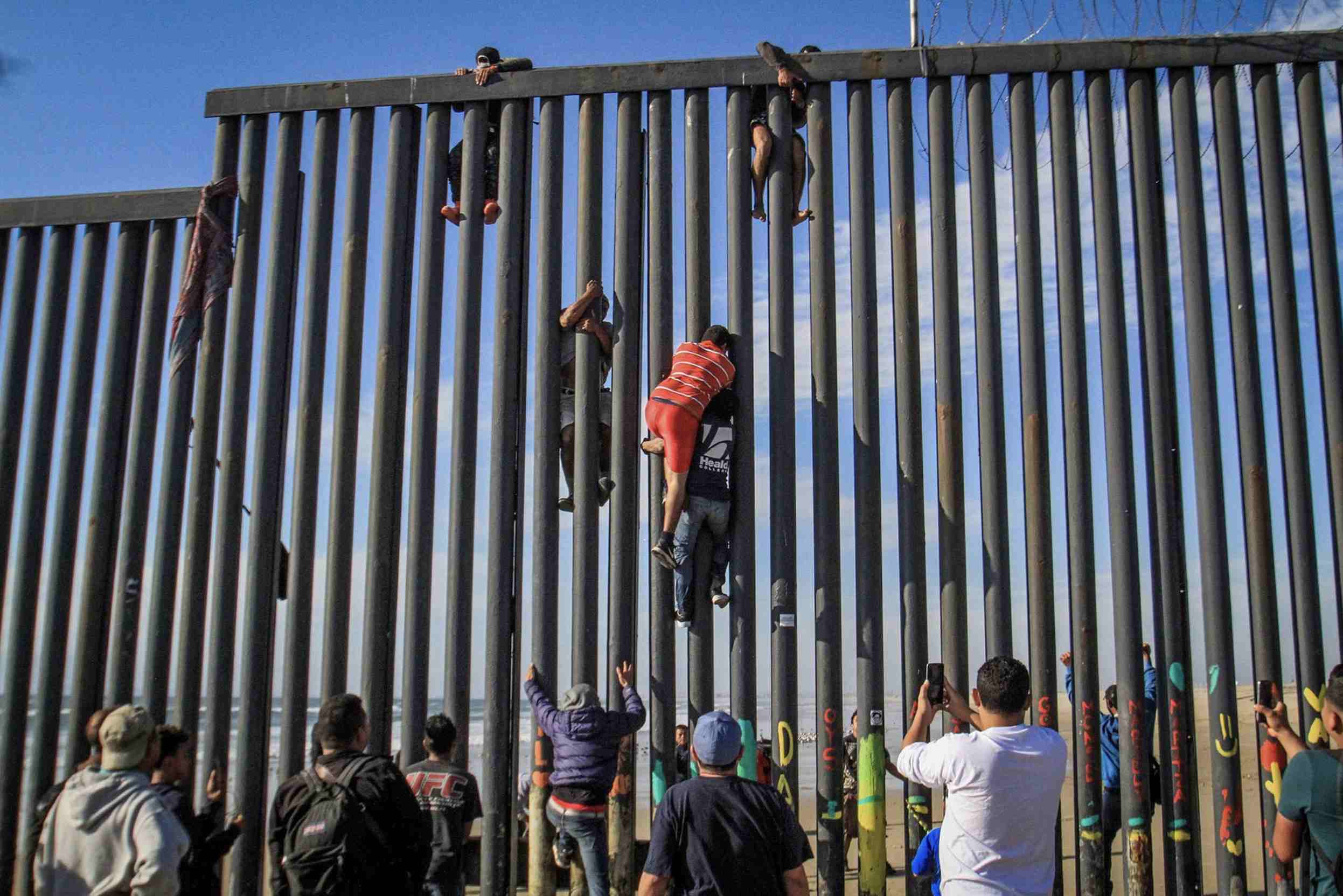 Around a hundred Central American refugees on the seashore in Tijuana try to climb over a metal wall to reach the United States, Mexico, March 19, 2019. Photo credit: EPA-EFE / Joebeth Terriquez
Around a hundred Central American refugees on the seashore in Tijuana try to climb over a metal wall to reach the United States, Mexico, March 19, 2019. Photo credit: EPA-EFE / Joebeth Terriquez
“Simple definitions of race and racism can’t actually help us understand how people experience this difference in their own lives, or why it exists at all. I think the discussion about racism obscures a fundamental difference between these groups, and that difference is whether they challenge state sovereignty.”
The researcher emphasized that speaking about race from a simplistic, Eurocentric perspective, the different histories and cultures of displaced persons from the Global South, the different narratives surrounding “white” Ukrainians and “white” Russians fall under the radar. More important is the fact that one group is considered a passive and innocent “victim,” while the other is labeled as a threat to national security, as an instrument of “hybrid warfare.”
Elizabeth Dunn emphasized that it is also important to keep in mind the categorization of displaced persons by states and international organizations. We should remember not only “official” refugees, but also other groups of migrants who are not formally considered refugees. In an attempt to control the flows of displaced persons, states establish various “markers,” using which they categorize different groups of people. This classification leads to discrimination. The reasons for the emergence of these markers can be found in global processes, in the structures of the global economy. Dunn noted that the response to migration often depends on the structure of the labor market: Ukrainian migrants are more desirable in the European market, while migrants from Africa or the Middle East are not.
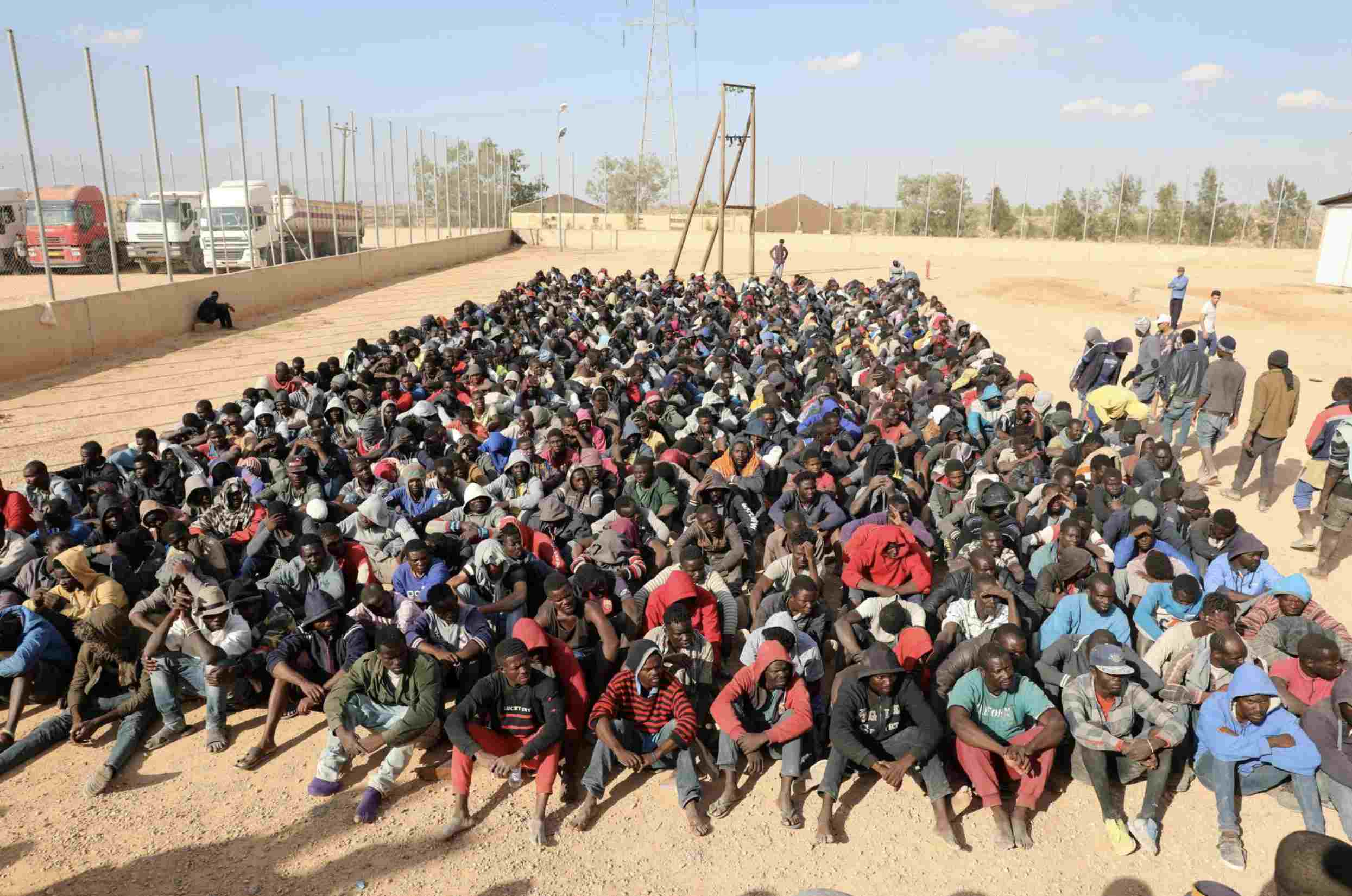 Migrants sit in a detention center in Gharyan, Libya, October 12, 2017. Photo credit: REUTERS / Hani Amara
Migrants sit in a detention center in Gharyan, Libya, October 12, 2017. Photo credit: REUTERS / Hani Amara
Weak International Response and Solidarity Among Refugees
A separate topic of the panel discussion was the weak and failed response of international organizations (such as IOM, the International Organization for Migration, or HIAS), that are meant to respond effectively to waves of refugees. Although the war in Ukraine has been going on since 2014, and the danger of a full-scale war was clear as early as the winter of 2022, global non-profit organizations (NGOs) were not prepared to provide rapid and sustainable humanitarian assistance. Elizabeth Dunn shared her experience of being on the Polish-Ukrainian border, where IOM tents stood empty for the first nine days after the invasion. According to the geographer, the slow response of global agencies is not unusual: from the very beginning of their functioning, structures under the auspices of the UN have acted chaotically and spontaneously.
Ayse Caglar also noted the lack of large institutions that can respond quickly and take responsibility. At the international level, the response of global NGOs is slow, which makes it impossible to effectively address migration crises. This applies to both the migration wave of Ukrainian refugees and the one caused by the earthquakes in Turkey.
Volha Biziukova emphasized the critical situation at the international level and the lack of interest among states in creating a stable and effective asylum system:
“The whole existing system, the whole existing law is built incorrectly. They cannot be simply improved by optimizing organizational issues because they have a certain intention, the intention to limit migration. And this intention governs many migration policies. We see this when we analyze different situations. Therefore, it is not an either/or question, whether the government is bad, or NGOs work better. We need to understand that there should be an ecosystem of different organizations that would have different levels of flexibility, different levels of grassroots support… All of this systematically requires large resources. But it is important to understand whether the system is set up to work properly, whether synergy is possible for the best possible assistance, or whether there are some actual prejudices that stand in the way.”
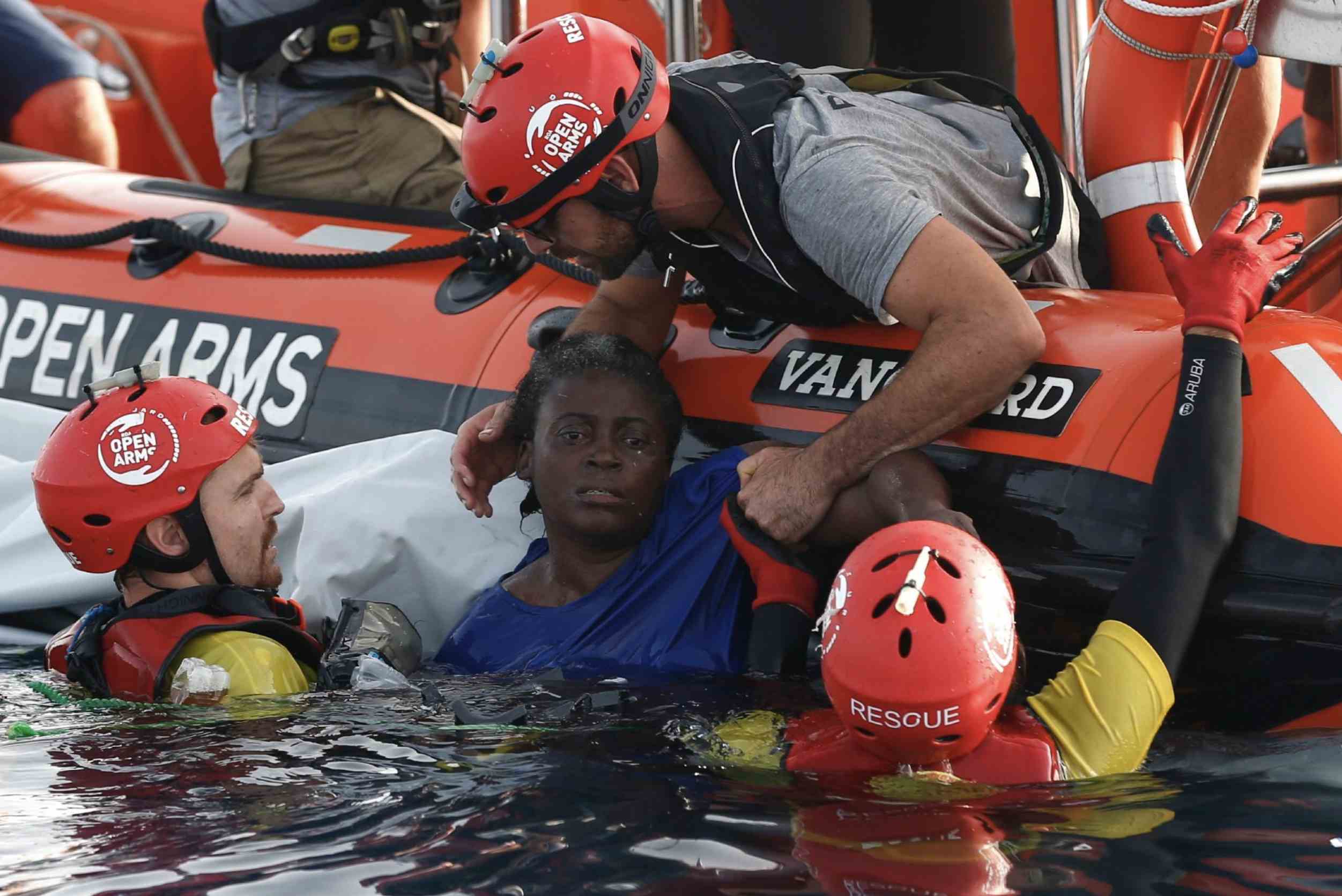 Members of the Spanish non-governmental organization Proactiva Open Arms rescue a woman in the open Mediterranean Sea about 85 miles off the coast of Libya, July 17, 2018. Photo credit: AFP / Pau Barrena
Members of the Spanish non-governmental organization Proactiva Open Arms rescue a woman in the open Mediterranean Sea about 85 miles off the coast of Libya, July 17, 2018. Photo credit: AFP / Pau Barrena
In such circumstances, solidarity between different groups of refugees and civil society organizations becomes critically important for displaced people. It becomes perhaps the most important factor in their survival. At the same time, such solidarity networks create new ties that allow for the development of stable support systems. Volha Biziukova noted that NGOs that were created to help Syrian refugees are now helping Ukrainian refugees, and Ruslana Kozienko emphasized that Ukrainian refugees participate in Vienna demonstrations in support of the Palestinian people. Thus, solidarity is almost the only alternative that, in the face of the stagnation of the international asylum system, allows millions of people to survive extreme situations and adapt to a new place.
***
Russia’s full-scale invasion of Ukraine has once again highlighted systemic problems with refugee reception. Among them, there is the lack of long-term programs that would ensure the right of permanent residence for all groups of displaced persons; misleading government rhetoric, presenting migration waves as “emergency” and “crisis” situations that allegedly require specific and temporary measures; and targeted policies of singling out and categorizing certain groups, which leads to discrimination. Based on which groups are more “dangerous” to sovereignty and which are more attractive to labor market agents, states label Ukrainian refugees as “victims” and refugees from the Middle East and other regions of the Global South as “illegal migrants.” There is a facade of a common, international vision of solving the migration problem, but in practice, even within such entities as the EU, the anti-migration policies of many governments are not constrained by anything.
Even those international organizations that were created specifically to provide shelter and accommodation for displaced persons are reluctant to solve these problems. Nation states are not interested in this either, due to the dominant leitmotif of cutting social spending and shifting social responsibility to civil society. However, NGOs and refugees themselves, as well as diaspora activist groups, are interested in addressing these challenges. By building ties and solidarity, they solve not only practical humanitarian problems, but also create a network of collective interaction and resistance to dangerous policies. The development of such networks can contribute not only to a rejection of anti-immigration policies, but also to the creation of a horizontal, more flexible and efficient system of assistance and accommodation for refugees, regardless of their origin.
How should the international system of refugee reception work?



